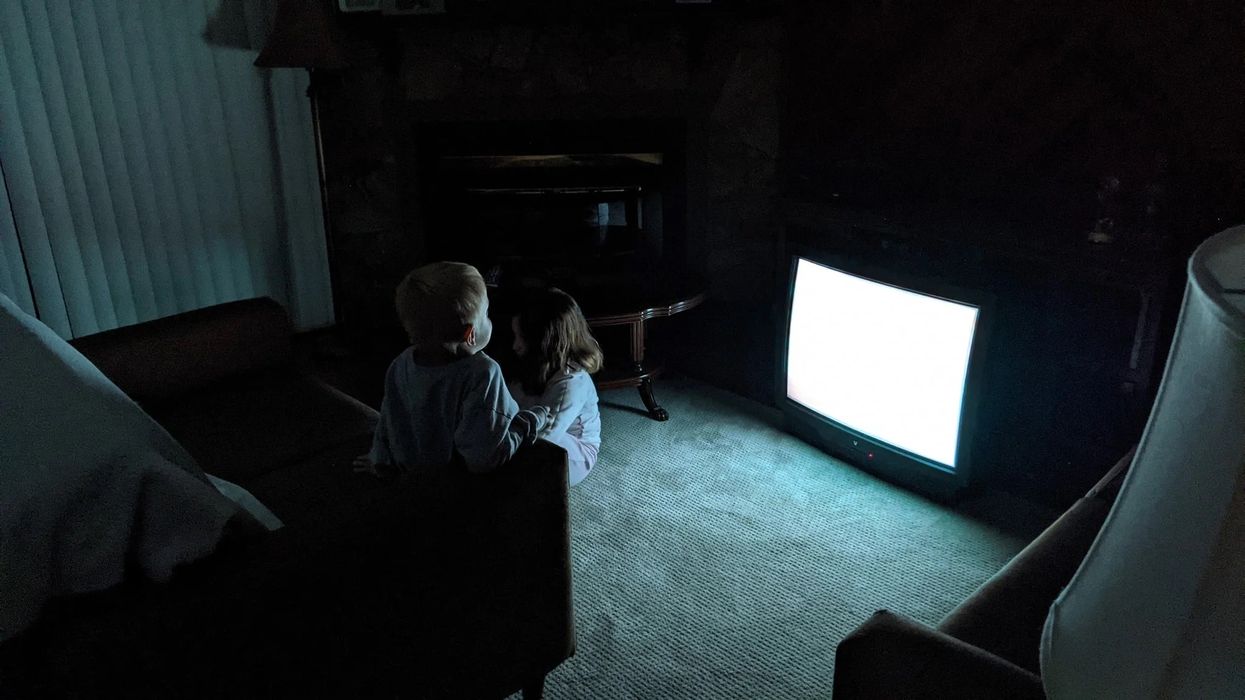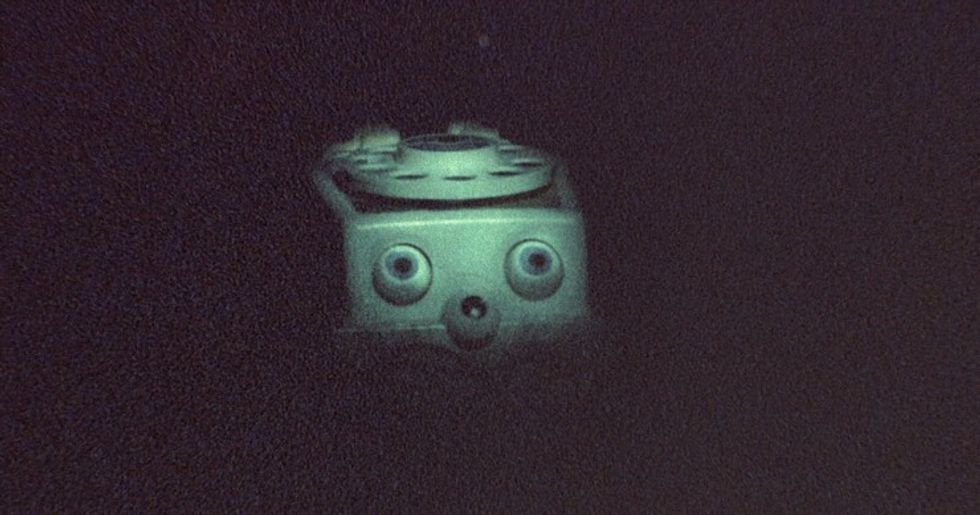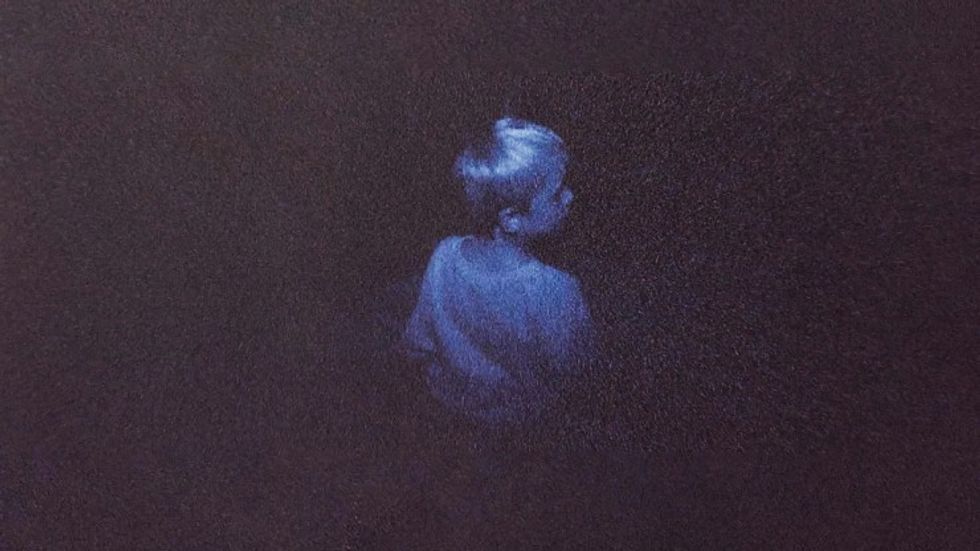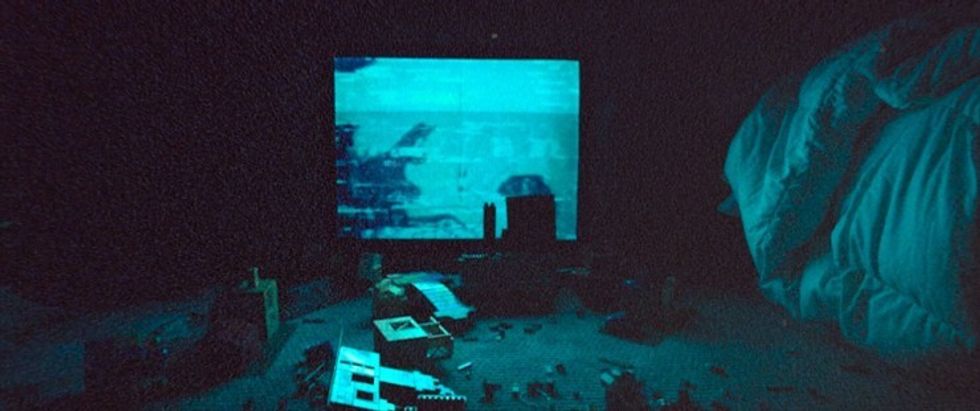How This Lo-Fi Micro Budget Film Is Changing the Horror Genre
This is what we can learn from this unique and experimental nightmare fodder low-budget horror film.

I was six years old when I was suddenly awakened in the middle of the night by a noise coming from downstairs. I forced myself out of bed, and sat at the top of the stairs, staring down into the inky darkness and listening to the strange noise seemingly coming from the kitchen below. I sat there for hours, petrified to move, my imagination running wild with ideas of who or what could be down there.
Fast forward to a chilly Friday night in 2023, when I was invited to join a group of friends to see a horror movie called Skinamarink at my local AMC. I had no idea that what I was about to watch would conjure up this memory and others like it.
At first, I felt as conflicted about Kyle Edward Ball’s Skinamarink as the YouTube comments section for the film’s trailer. Strangely, however, I find myself having the urge to see the film again. The more I think about this slow-paced, experimental horror film — in which you hardly ever see a person, let alone a face — the more I have come to appreciate it. Even more mind-blowing is how the film made $1.8 million on a $15,000 budget (according to Box Office Mojo).
What makes Skinamarink work? Let's break it down.
What is Skinamarink About?
The basic premise of Skinamarink centers around two children who wake up in the middle of the night to find their father and all of the doors and windows in their house missing. But the premise fails to reflect the true originality of the film. The uniqueness of Ball’s intention and execution is where the true genius of Skinamarink lies. Through purposeful and bold lo-fi filmmaking, Ball crafts a film that’s unlike anything else in theaters today, maybe ever.
I found the film to be an effective mood piece that activated primal childhood dread. Not to mention that it accomplished this on a meager budget of $15,000. Love or hate Skinamarink, there is much to appreciate, discuss, and learn from the film.
Let’s take a look at some of the bold ways that Kyle Edwarcanable created this immersive and unsettling experience.

The Beauties of Analog Horror
As Joe Hoeffner points out in his Collider article, analog horror “mines the media of the late 20th century — warped VHS tapes, crackly radio stations, cheap public access television — for dread and terror.” There is a niche audience on YouTube for creators making content in this vein.
Skinamarink almost certainly draws inspiration from analog horror and shares many of its qualities with the grainy camcorder-like footage, old cartoons, and suspense built through ambiguity. Ball himself has a YouTube channel called Bitesized Nightmares, in which he takes the personal childhood nightmares described by Reddit users and creates videos out of them.
However, Skinamarink is in many ways distinct, and able to transcend the limitations of the internet-confined genre. It doesn’t need a complex backstory, reliance on found footage, or foreboding text to create the same type of chilling atmosphere.
It’s easy then to imagine that this progression of analog horror could inspire a new, more mainstream sub-genre of horror films much as the found-footage sub-genre did.

To Jump Scare or Not to Jump Scare
Staring down empty dark hallways can be scary in and of itself, but many of the most terrifying scares of Skinamarink are deployed using the classic jump-scares. However, it is how Ball uses the jump-scare that stands out in Skinamarink.
In one instance, in which the little girl goes to look under a bed, the camera slowly moves to the ground to settle on the blackness below. Watching this, I could feel the audience tense around me as we all braced in anticipation of something lunging at us out of the darkness. We waited for a hand or face to flash across the screen as the camera held onto the black space and then… nothing.
It’s in these restrained moments when Ball chooses to forgo the scare that keeps the audience on the edge of their seats. This restraint creates a sense of unease so that we are constantly anticipating the jump-scare, yet simultaneously never sure when it’s actually coming.
In any horror movie, it is often what we cannot see that is most frightening. Skinamarink, even if only for practical purposes, employs this tactic beautifully.
Underexposed lighting, noises and dialogue heard off-screen, chairs and toys stuck to walls or moving on their own all work to create an unsettling atmosphere in which you are asked to fill in the blanks. The film is suggestive, forcing us to imagine what is happening off-screen. Let’s be honest, there’s nothing scarier than our imaginations.
Even the absence of faces seen onscreen works to make the few times we do see a face horrifying.

The Horror Point-of-View
The film plunges the audience into a perspective that takes you back to when you were a kid, lying in bed late at night, listening to the strange noises in your house.
Camera angles are kept low, allowing us to see things from the perspective and point of view of a child. Similarly, familiar spaces and items are made unsettling.
Sometimes Ball puts us in the children’s point of view, allowing us an objective experience of the nightmare unfolding. Without knowing much about what these kids look like, it’s easy to imagine you are experiencing the film through a younger version of yourself.

Ambiguity is Your Low-Budget Friend
The noises I heard coming from the kitchen as a kid were likely just the typical moans of an old New England house, but the younger version of myself could never be sure.
Likewise, Skinamarink leaves no easy answers for its viewers. There are several conclusions that one could draw from the story itself, but attempting to understand the film as a typical A-to-Z narrative would be to miss the point.
For some, this ambiguity and lack of a concrete conclusion will be extremely frustrating. Though they will dismiss the film for its lack of filmmaking convention, it is precisely that idiosyncrasy that will make the film work for others. The slow pace building to moments of terror or the horror of trying to grasp answers in an unanswerable situation will terrify some and make others scoff.
However, if you know what you’re getting into, Skinamarink is worth a watch for any filmmaker interested in learning something about creating unsettling dread. Even if you dislike this film, I hope that you come to appreciate its ingenuity and its experimental attitude. We need more of that.
Let us know in the comments what did or did not work about Skinamarink for you.











